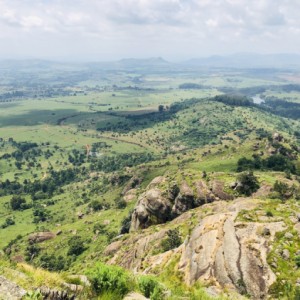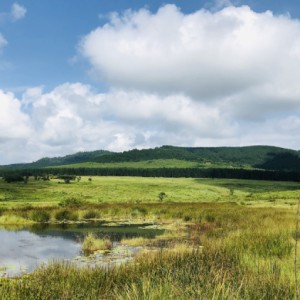Execution
At Mlilwane rest camp the long-standing display of rusty recovered snares helps tell the story of conservation in Eswatini. This was the first protected area in the country, after the Reilly family converted their farm and fought against the British colonial government to establish land for wildlife protection. Although British colonists in other parts of Africa did try and take conservation areas seriously, perhaps because Swaziland had been depleted of most wildlife, the idea was dismissed by most as fanciful. However the Reilly family has persisted and developed an impressive network that has overseen the reintroduction of many well-known species that had been extirpated from Eswatini.
In 2007 when I was running volunteer group trips I travelled to Mlilwane with my boss Beth and we met with Ted Reilly. We needed to identify ways to keep a large group of volunteers occupied in conservation sites. Thinking back, I had close to zero knowledge of how to create and negotiate successful partnership projects. Ted entertained us but likely was reacting as I do these days when people want to volunteer with my organisation with no relevant training or experience. As field conservation projects depend heavily on intricate relationships with governments and communities, it’s very challenging to find ways to occupy unskilled volunteers although the passion and enthusiasm are wonderful and need to be channelled somehow. My ‘stakeholder engagement’ skills have improved over the years as relationship development is central to everything.
I climbed Execution Rock, pictured, in 2008 with some of the more intrepid volunteers from the group at the time and I scaled it again this morning. Either Eswatini has undergone much tectonic uplift in the years since or I’m much less fit than when I was 25. Some sharp cliffs drop down from the summit of this peak, and legend has it that wrongdoers were executed by being chucked off from a great height.
After summiting I tried to walk along the ridge but a troop of baboons blocked my progress by barking frenetically and working themselves into an unnecessary state. I’m no match for baboon canines so I retreated and headed back towards lower ground.
However the encounter got my brain working feverishly. My demeanour had been unthreatening and I was a minority number, but was held at bay by a mob of overly aggressive beasts. Their response was a primeval hostility towards an outsider who they would have soon realised posed zero threat to their safety or comfort. They weren’t prepared to merely look on ambivalently and had already created multiple scenarios about how I would threaten their traditional customs with my unfamiliar behaviour.
As I walked away there were some lingering snarls directed at me by the most rabidly hostile but the baboons soon occupied themselves with vicious in-fighting. It appeared that their own group dynamics could be the real source of their problems, but that they had united to direct collective anger towards an outsider as a temporary diversion from the deeper issues. I would hazard that the instigator of the anger towards me was an unlikeable submissive adult male, vying for power, who isn’t a benevolent member of the troop but charms half of them into thinking he is. The group is too occupied by staring at each other’s swollen anuses to think too much about the hypocrisy of the male attacking outsiders whilst bringing in a female mate from another troop located to the south east. She turned out to be a pleasant addition as she has proved valuable in knowing how to catch a species of lizard that they didn’t.
Perhaps other outsiders could assist with other challenges, with some patience and effort needed on both sides. I’d advise this baboon troop that if they continue not taking the risk of outside contact, they may struggle when times become tough. In a time of plenty such as the current middle of the wet season, sustenance is available even on the high peaks. However when the dry winter hits, warmer climes at lower altitudes may need to be sought and cooperation over resources may become critical for survival. Their current tactic of isolationism over collaboration for mutual benefit may not pay off when troops in warmer climes are no longer interested in the cynical reversal of their inward-looking behaviour, and bark at them to piss off.
And as for a subset of past-their-prime baboons from the highlands troop who did migrate to the warmer region, their behaviour is the most nonsensical of all. They’d carved out lodgings around two hours’ flying time south (according to birds of prey) under rocks they soon bleached white from the actions of their own faeces. They maintained a reliance on familiar foods brought down from the peaks (fried eagles eggs, wild-growing beans and fried strips of warthog meat), and they made only cursory attempts to master the tongue of the local troops. Despite a life of relative comfort they opted to regress towards isolationism instead of integration, whilst still expecting local troops to host them and provide them with medicinal plants to treat ailments, and for supplies of their fried warthog meat to arrive regardless of increasing barriers in the landscape.
As I walked I digressed into this fanciful scenario, with no obvious human parallels. Suffice to say that compared to other animals, for such sentient and seemingly intelligent beings I don’t think the human race has always maximised the use of tools at its disposal: intellect and ability to cooperate.
The walk was hot and long so I had a refreshing shower and relaxed on the deck at the Mlilwane restaurant, known as ‘Hippo Haunt.’ I wanted to do a bodily tick check as I’ve had tick bite fever before in Eswatini, and it’s not fun. I should perhaps have waited for the privacy of my own beehive hut (see extras) as the table of Chinese tourists nearest to me got more leg than they bargained for with their chips and roiboos tea. Actually, one of that group was more fascinated by another tourist who had fashioned together a rod and was dangling food above the water to tantalise the terrapins.
I passed a very pleasant couple of hours on the decking with a book about a South African family and with southern red bishops flitting in the reeds. They are stunning birds (males only; females are drab).




Comments
Sign in or get an account to comment.


